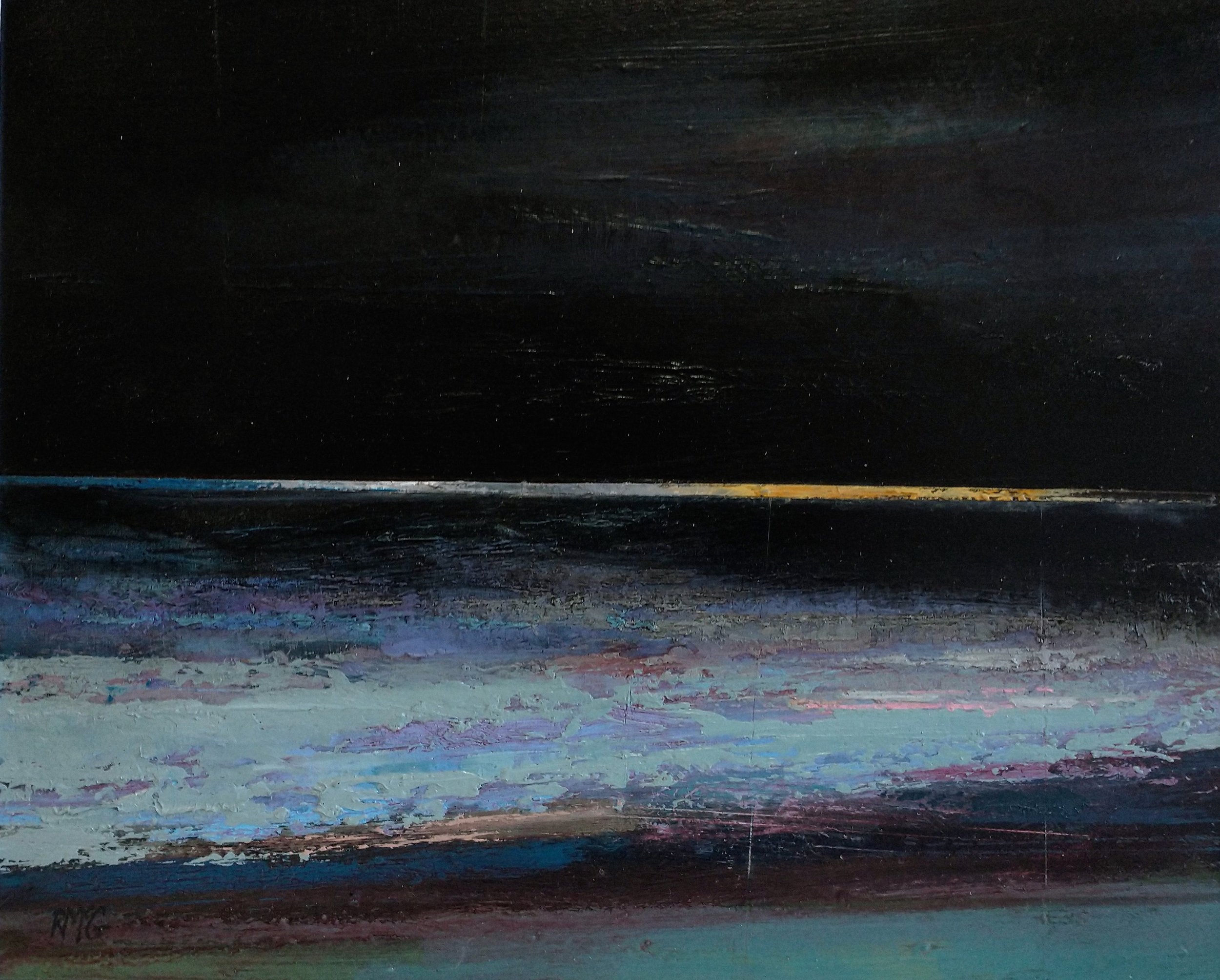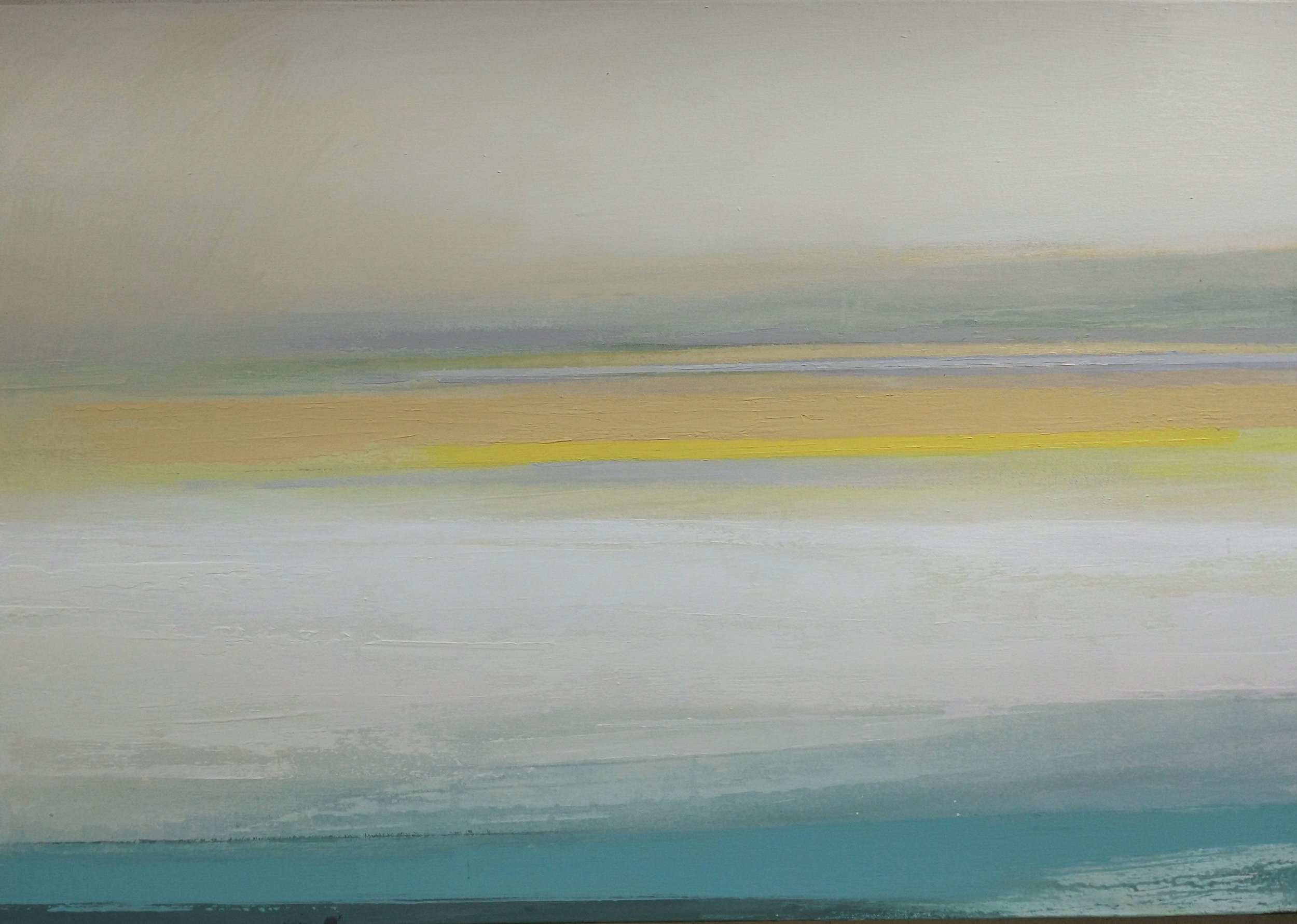
The Sketch:
Robert McGilvray
In The Sketch, we ask artists to answer a few questions that may be the first step towards a full feature and may finish as a sketch. Robert McGilvray currently has an exhibition at Birch Tree Gallery, during the Edinburgh Festival, and The Sketch offers an introduction to him and his work
Robert McGilvray Aerios 1
What made you decide to be an artist?
My earliest memory of drawing was when an older cousin, who was a deep-sea fisherman and a very good draughtsman, came to childmind my twin brother and me when on shore leave. I would have been 4 or 5 years old.
Did you enjoy Art School? Who influenced your student work and how?
I went to Art School in Dundee (I'd never been to Dundee and I was keen to leave Glasgow). I thoroughly enjoyed it. It was ' old school' then... when you learned everything that you'd need to be an artist. Alberto Morrocco was in charge. I learned a lot from Peter Collins, Dennis Buchan and Jack Knox. I went on to teach there for 40 years.
Can you tell us about how and why you got involved in public art?
The Scottish Arts Council had launched a gable-end mural painting scheme in the mid-seventies in Glasgow, inspired by the success of the Chicago Mural Project. This was followed by Dundee. I was commissioned to paint two gable end murals (Intro and Outro).
Dundee City Council was becoming interested in involving artists in regeneration projects. I was invited to become a member of a small group of planners, engineers and artists. The Blackness Public Art programme was set up and I became its co-ordinator and later on, took on a similar role for the city-wide Dundee Public Art Programme.
Robert McGilvray Aeolus 2
Have you always painted? How has your approach changed?
I stopped painting for about 20 years when I was establishing studios for WASPS in Dundee, founding the Seagate Gallery, setting up the public art programme, travelling the UK doing talks on public art, writing strategies for several local authorities and teaching in the Art College. I managed to return to my painting practice around 2002. When I started again, the work was centred on the built environment (unsurprisingly) with a series of drawings and constructions called Nexus Plexus. About 10 years later, I began to respond to the natural landscape...the mountainous west coast and the flatter east by contrast.
Which Scottish/international artists do you admire?
When I was creating Nexus Plexus, I was more interested in architects, particularly Japanese ones like Tadao Ando and his 'Constructed Nothingness'.
When I moved on to the landscape, I would look back at DY Cameron and the seventeenth century Dutch painter Philips Koninck and his 'panoramic' paintings.
Looking back over your art career, what do you feel are your greatest achievements?
Dundee Contemporary Arts wouldn't have happened if it hadn't been for a Ragbag of determined young artists and the Seagate Gallery.
Can you describe your current approach to painting?
Although I do keep sketchbooks, they are more like 'scrapbooks' containing ephemera, photographs, newspaper cuttings , written thoughts, quotations that suggest ideas or even notes from something on the radio....and drawing of course.
I cycle a lot and gather images by memory... I rarely take a sketchbook or camera, being wary of becoming a hostage to a literal or pictorial anchor. It's amazing what the memory can retain.
Materials...
I usually begin the underpainting, working on surfaces on the floor..always more than one at a time...applying random areas of usually neutral, thin acrylic paint using sponges, brushes and rollers. There is never a top or bottom to the work in the early stages. The painting is being turned around until there is sufficient interest to develop an image (Da Vinci would often throw a rag soaked in ink onto a surface to begin a painting). At this stage, and on board, it may even get cut up into 4 equal surfaces then joined up at random and put through the same process again until a good underpainting is established.
Once the painting/s are underway I usually move onto oil and a whole new range of possibilities emerge. Oil paint and painting mediums are ultimately my material of choice.
What are you trying to achieve in your painting? When do you know the work is completed?
Up until a couple of years ago, I hadn't realised that the work might be an unconscious statement of our times...dark and threatening and eerily uncertain but always countered by a passage of light, sometimes only minimal but nevertheless interrupting the limitless space and offering a bit of distant hope.
The work now explores the light and the dark, the fine and fragile balance between pessimism and optimism, the uncertainty in the mists.
Paintings such as Aeolus 1&2 and Aerios 1&2 illustrate the above.
Winter Light 1&2 do this as well but in addition, employ some construction/marquetry in the inlaid horizon.
As the painting progresses, the work begins to suggest what it's final orientation should be. Which way up , whether (if it's on board) it needs edited (i.e. Cut). Then 'old school' tricks can be employed, such as examining it in a mirror which exposes compositional imbalance and areas of over or under emphasis. Photographing the work and editing it on camera is also useful.
Finally, although I work on my own, I do rely on the 'peer group' rational. My wife is also an artist and can bring a fresh eye and constructive advice to my efforts.
Robert McGilvray Winter Light 2
Have you reached a settled stylistic position? Is the current approach to work the summation of Robert McGilvray's life and work?
I always try to move new work on – do something different, no matter how small. I try not to repeat myself. I'm thinking now that some of the work is becoming 'real' and I'd like to move on to further abstraction.
What makes you feel good?!
Cycling around the East coast and the Western isles does it for me.



